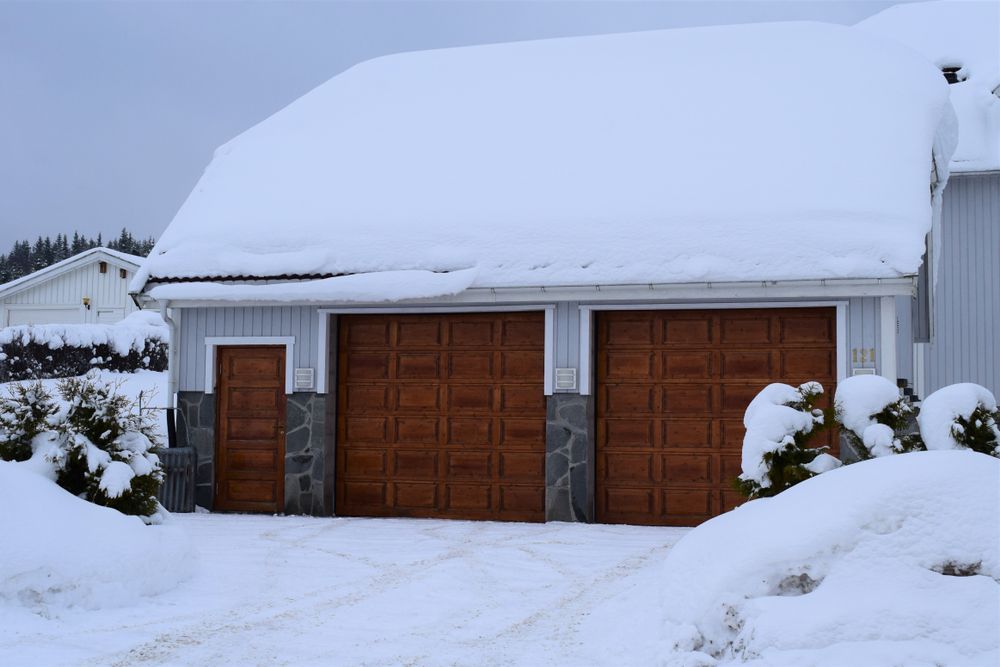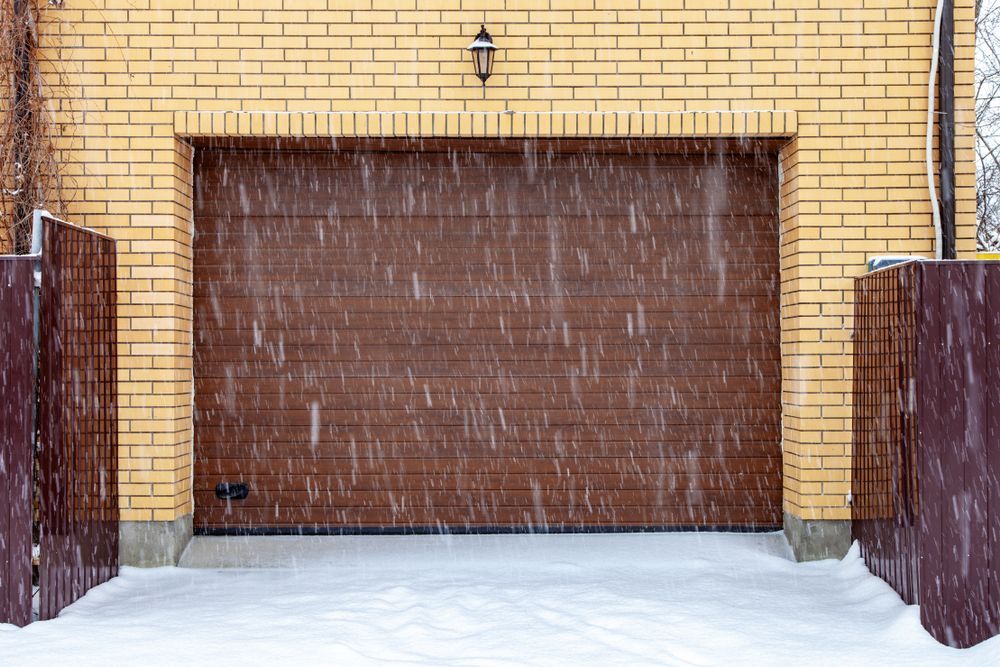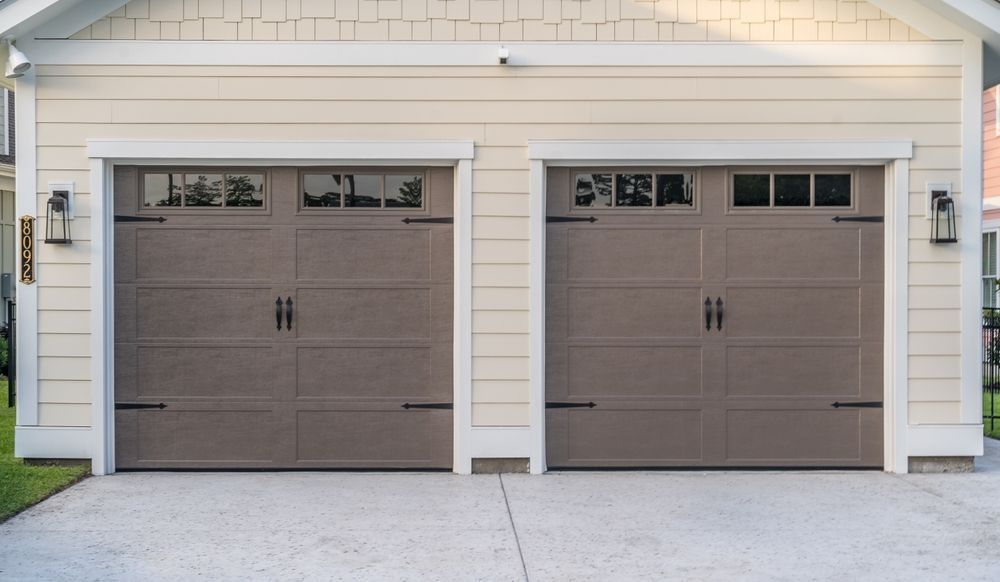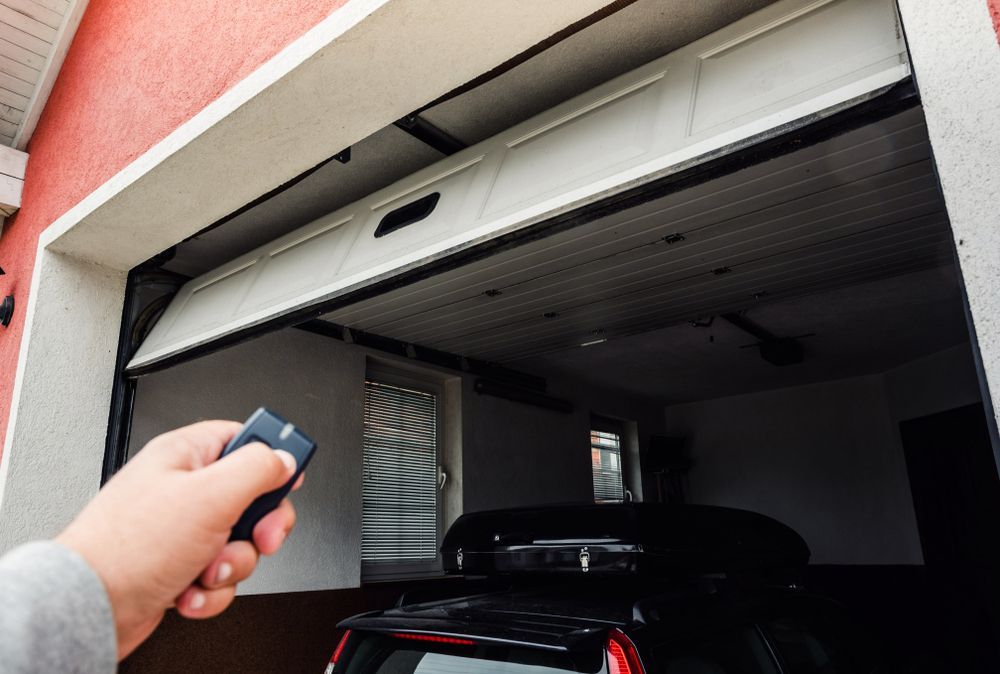How to Keep Your Garage Door from Freezing Shut
On a bitter January morning, a garage door that won’t budge can throw off everything. It’s easy to assume the opener’s acting up. Then you spot a sheet of ice anchoring the bottom seal to the concrete. For homes in Chicagoland, this isn’t rare. Cold snaps turn simple routines into frustrating puzzles. But winter doesn’t have to win. Simple steps can keep your garage door moving.
Why Garage Doors Freeze Shut in Cold Weather
A garage door doesn't need much moisture to freeze shut. Snow melt from your car, humid air trapped inside, or water runoff from the roof can collect near the bottom seal. When temperatures drop overnight, that moisture becomes ice, bonding the rubber seal to the concrete below.
Even a thin layer is enough to create resistance. If the weather stays cold, this cycle can repeat for days. What starts as a one-time issue often turns into a recurring frustration during a long Chicagoland winter.

Over time, the buildup of ice, grime, and salt around the door’s base makes it more likely to stick again. This problem is common, but routine attention and a few adjustments reduce the risk.
The Hidden Damage a Frozen Garage Door Can Cause
What feels like a stuck door is often a sign of deeper wear. Forcing a frozen garage door open can strain more than just the opener. Over time, repeated cold-weather issues can lead to lasting damage.
Weather stripping may tear or stretch under pressure, reducing its ability to seal out cold and moisture. Panels can warp or crack when ice causes uneven resistance across the surface. Opener gears may strip, and sudden jolts can misalign tracks or rollers. In some cases, the added tension can even snap springs or cables.
These
repairs often start small but become more expensive over time. Catching the issue early prevents larger problems and helps preserve performance.
Safe Ways to Free a Frozen Garage Door
When a garage door is frozen shut, forcing it open can lead to more damage than the cold itself. A careful approach avoids harming the opener, seal, or panels. The goal is to gently break the bond between the door and the concrete.
- Use warm (not hot) water to melt the ice, then dry the area
- Apply de-icer spray near the seal to loosen the bond
- Gently chip away ice with a plastic scraper, never metal
- Use a hair dryer or heat gun on low to warm the seal evenly
Rushing the process increases the risk of costly repairs.
Long-Term Ways to Keep Your Garage Door from Freezing Shut
Preventing your garage door from freezing shut starts with managing moisture and keeping cold air from settling around the base. Small steps done consistently have the biggest impact during a long Chicagoland winter.
Long-term ways to reduce freeze-ups:
- Install a rubber garage door threshold to block water from pooling near the seal
- Keep the area near the door dry using a floor squeegee after snow or rain
- Apply a silicone-based lubricant along the weather seal to reduce sticking
- Check and adjust the door’s bottom seal so it sits evenly across the floor
- Use a space heater or dehumidifier if condensation builds up inside the garage
Preventative measures done early can save time and money later in the season.
Weatherproofing Tips from Chicagoland Garage Experts
Weatherproofing your garage door is one of the most effective ways to avoid winter freeze-ups and improve overall energy efficiency. In Chicagoland, where temperatures can drop quickly and stay low, proper sealing keeps moisture out and protects the door from unnecessary wear.
Upgrading to insulated doors helps maintain a more stable temperature inside the garage. Adding or replacing top and side weather seals keeps drafts from creeping in around the frame. A flexible bottom seal prevents the door from freezing to the concrete.
Redirecting downspouts away from the garage foundation keeps water from pooling. Even checking for light leaks helps identify weak spots where cold and moisture can enter.
Maintenance Habits to Prevent Winter Garage Door Problems
Winter conditions place steady strain on moving parts, seals, and safety features. Building a few simple maintenance habits into your routine can keep your garage door running smoothly all season.
Maintenance habits worth building:
- Wipe down the bottom seal regularly to remove salt, ice, and grime
- Lubricate metal parts like rollers, hinges, and springs once a month
- Listen for unusual sounds that could signal tension or misalignment
- Test the auto-reverse sensor to confirm it responds correctly in the cold
- Inspect cables and tracks visually for any early signs of fraying or buildup
- Schedule professional maintenance in late fall to catch wear before winter sets in
These habits help reduce breakdowns and keep your system dependable.
When to Call a Professional for Frozen Garage Door Repair

Some frozen garage door problems aren’t fixable with a hair dryer or de-icer. If the door won’t open after several careful attempts, or if it makes unusual sounds while trying to lift, it’s time to stop. Forcing it can break springs, burn out the opener, or throw the door off track.
A technician can tell the difference between parts that are frozen, worn, or failing. Cold weather makes everything more brittle, so even small issues carry more risk. Damage that seems minor often becomes more complicated under pressure.
When the door controls access, comfort, or security, delay becomes more than an inconvenience. Getting expert help early reduces long-term damage and restores function safely.
Keep Your Garage Door Moving All Winter with Uplift Garage
Winter doesn’t have to stop your garage door from doing its job. Consistent maintenance, smart weatherproofing, and timely repairs make all the difference when temperatures drop. Uplift Garage helps homeowners across Chicagoland reduce freeze-ups and resolve cold-weather issues quickly and professionally.
If your garage door is stuck, showing signs of wear, or you're considering new and replacement garage door openers, our team has the tools and experience to handle it with care and precision.
Cold weather isn't going anywhere, but your garage door should still move as it should.
Contact us today to schedule a service visit or learn more about winter protection options.




